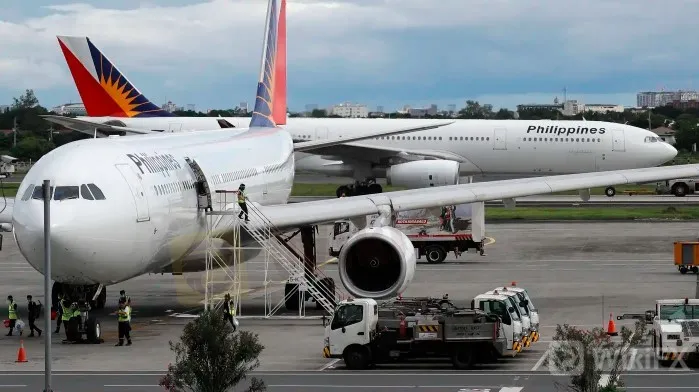简体中文
繁體中文
English
Pусский
日本語
ภาษาไทย
Tiếng Việt
Bahasa Indonesia
Español
हिन्दी
Filippiiniläinen
Français
Deutsch
Português
Türkçe
한국어
العربية
Philippine Airlines parent begins trading
Abstract:Flag carrier aims to take off with more cargo and digitized operations
Philippine Airlines' parent company began trading on Monday but needs more funding. MANILA Philippine Airlines' parent company began trading on Monday, nine months after exiting bankruptcy protection. MANILA Philippine Airlines' financial difficulties worsen even as its parent company believes it is nearing completion of a debt restructuring plan. PAL Holdings recorded a financial loss of 8.6 billion pesos ($178 million) for the three months ended March, while its capital deficit increased by over 10 billion pesos to 83.9 billion pesos. The carrier is “in the final phases of a comprehensive restructuring plan that will enable the airline to emerge financially stronger from the current global crisis,” according to a press release accompanying the findings. The company's 2020 results showed the pandemic's impact. In 2019, the net loss grew to 73 billion pesos from 9.7 billion, while revenues fell 64% to 55.3 billion. Its capital deficit increased to 74 billion pesos from 3.5 billion pesos in 2019. President Gilbert Santa Maria announced late last year that the corporation would seek legal protection for its debt restructuring. It also planned to return planes to lessors and raise $505 million in new finance to avoid bankruptcy. Early this year, the corporation laid off roughly 2,000 people, or a third of its workforce. In its 2020 annual report, Philippine Airlines said it had already begun reorganizing its fleet to accommodate lower demand for air travel. On May 26, it had not submitted “any rehabilitation plan with any court”. The airline will also streamline its route network by discontinuing “certain ultra-long-haul routes and modifying overall route network frequencies” compared to 2019. According to PAL Holdings, it has received “bridge money and support from its majority shareholder and deferred payments through the forbearance of lessors, lenders, and suppliers.” “Philippine Airlines' recovery will be slow,” PAL Holdings said. “The situation remains uncertain, but the availability of COVID-19 vaccination gives hope that passenger traffic will surpass 2020.” All Nippon Airways' parent firm, ANA Holdings, owns 9.5% of PAL Holdings.

Disclaimer:
The views in this article only represent the author's personal views, and do not constitute investment advice on this platform. This platform does not guarantee the accuracy, completeness and timeliness of the information in the article, and will not be liable for any loss caused by the use of or reliance on the information in the article.
Read more

Mumbai Police Nabs Black Paper Dollar Conversion Forex Scam Perpetrators: Check Out the Details
The crime branch of the Mumbai Police has nabbed a racket involved in duping people by claiming to convert black paper into dollars. Check this unique 24.7-lakh scam story.

CME International Records a Massive Jump in Forex Volumes
CME International recorded a record surge in its foreign exchange trading volumes during the second quarter. Check out its performance across products and markets.

New to Forex Trading in India? Here's How You Can Start and Maximize
Want to begin your forex trading journey in India? Here's a guide that will help you open and close trading positions effectively, resulting in enhanced returns and minimized risks.

How to Find the Most Reliable Forex Broker for Trading in 2025
Learn what makes a forex broker reliable in 2025. Explore key features like fast execution, tight spreads, and transparent pricing for smarter trading decisions.
WikiFX Broker
Latest News
Manual vs. Automated Forex Trading: Which One Should You Choose?
Scammed by a Click: He Lost RM300,000 in a Month
Revealing Factors That Help Determine the Gold Price in India
Why Regulatory Compliance Is the Secret Ingredient to Trustworthy Forex Brokers
How Are Trade Policies Affecting the Aluminum Market?
US Government Interest Grows in Victory Metals’ Rare Earths Supply
RM71,000 Lost in a Share Scheme That Never Existed
Pentagon to become largest shareholder in rare earth miner MP Materials; shares surge 40%
Delta shares jump 13% after airline reinstates 2025 profit outlook as CEO says bookings stabilized
Delta shares jump 12% after airline reinstates 2025 profit outlook as CEO says bookings stabilized
Currency Calculator


